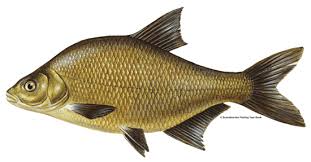Bream fish:
Seabream in habit shallow coastal waters in small groups or as induvial and utilize a range of habitats from sea grass beds, rocky and sandy bottom depths of the sea of 150cm. Bream are typically early risers, which means dawn and dusk are prime feeding times for them. The twilight hours, when the water is cooler and less disturbed, this is the perfect condition for them to venture from the safety of deep water to feed.
Appearance of bream-

The body of the bream is high- height up to 1/3 of length, which is laterally compressed. The bream has a small head and short snout, the mouth is semi- inferior, small, ending in a retractable oral tube. The anal fins begin under the posterior edge of the base of the dorsal fin. In spawning males, spots appear on the juveniles, the bellow is yellowish, the fins are dark, light brown or grey, they have a deeply forked tail. The maximum length of the bream is about 80cm and weight 9kg. The life span of bream is up to 13-17 years
Bream is a freshwater fish, usually lake and river fish, they prefer not very fast stagnant waters. In the seas, bream is common in designated areas of the sea with depths up to 4-5cm. Bream is also found in the bays of the Balti. Bream prefers to live in reservoirs with muddy or sandy bottoms, they do not like cold or fast waters!
Breading:
Large bream fish can produce up to 50,000 and 1,000,000 eggs in their first breading season. Egg yield is higher in the natural environment. Continuous eggs retrieval is easily archived under hatchery conditions. In their natural environment spawning takes place at depths of 5-25 meters ovulation occurs mostly at 14-19 degrees. Therefore, as you move more north of England, the spawning will take place during the summer.